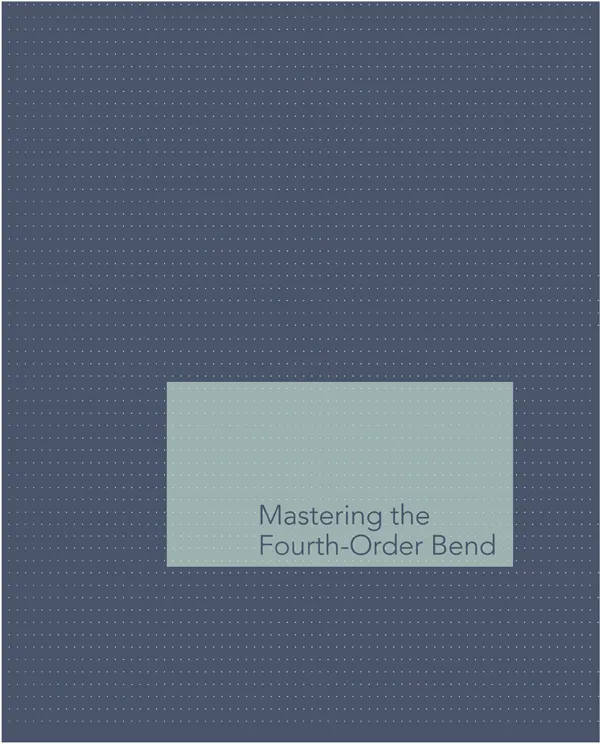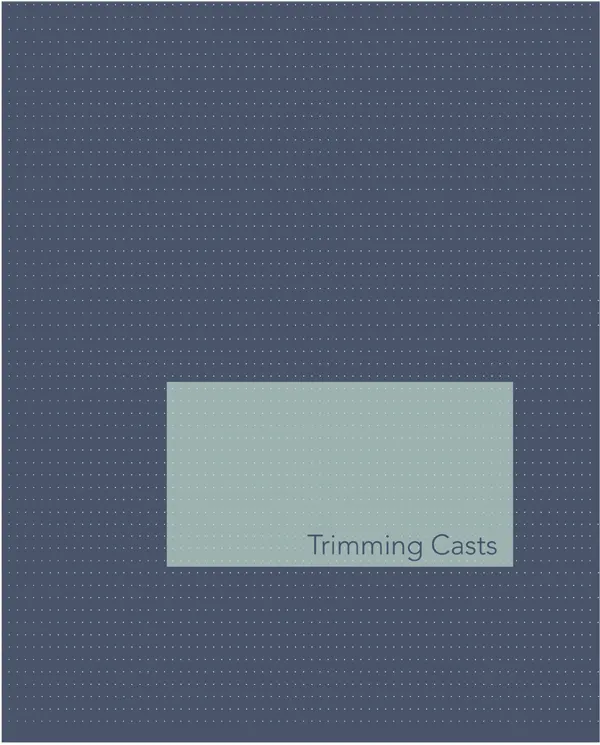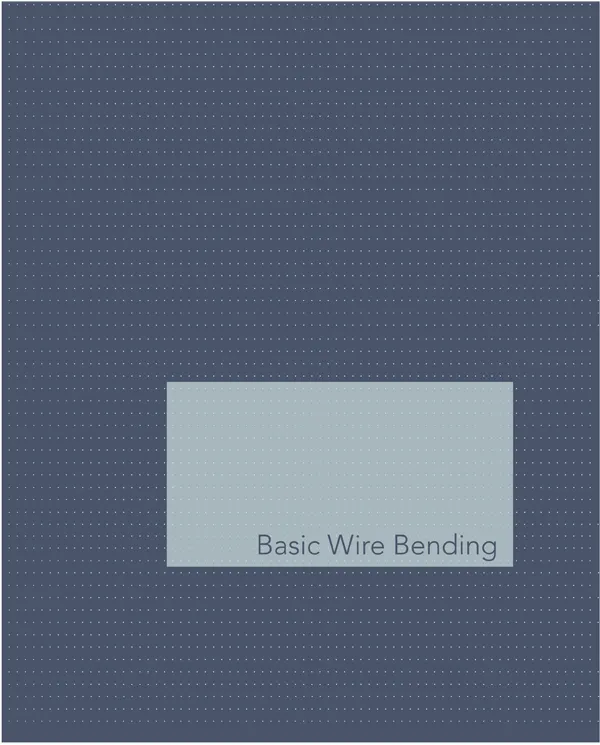
eBook - ePub
Manual of Wire Bending Techniques
Eiichiro Nakajima
This is a test
- 96 pagine
- English
- ePUB (disponibile sull'app)
- Disponibile su iOS e Android
eBook - ePub
Manual of Wire Bending Techniques
Eiichiro Nakajima
Dettagli del libro
Anteprima del libro
Indice dei contenuti
Citazioni
Informazioni sul libro
Effective wire bending techniques that are customized to each individual patient make orthodontic treatment more efficient and can reduce treatment time. the author of this manual promotes precise, intuitive bending and presents the essential componoents and techniques of customized wire bending step-by-step, including trimming of casts; selection and proper manipulation of pliers; the first-order bends (in or out), second-order bends (up or down), and third-order bends (torque); and optimal methods of adjustment to be used during orthodontic treatment. Technical images and case presentations illustrate each step of the process to ensure maximum comprehension. A must-have guide for orthodontic residents and practitioners alike.
Domande frequenti
Come faccio ad annullare l'abbonamento?
È semplicissimo: basta accedere alla sezione Account nelle Impostazioni e cliccare su "Annulla abbonamento". Dopo la cancellazione, l'abbonamento rimarrà attivo per il periodo rimanente già pagato. Per maggiori informazioni, clicca qui
È possibile scaricare libri? Se sì, come?
Al momento è possibile scaricare tramite l'app tutti i nostri libri ePub mobile-friendly. Anche la maggior parte dei nostri PDF è scaricabile e stiamo lavorando per rendere disponibile quanto prima il download di tutti gli altri file. Per maggiori informazioni, clicca qui
Che differenza c'è tra i piani?
Entrambi i piani ti danno accesso illimitato alla libreria e a tutte le funzionalità di Perlego. Le uniche differenze sono il prezzo e il periodo di abbonamento: con il piano annuale risparmierai circa il 30% rispetto a 12 rate con quello mensile.
Cos'è Perlego?
Perlego è un servizio di abbonamento a testi accademici, che ti permette di accedere a un'intera libreria online a un prezzo inferiore rispetto a quello che pagheresti per acquistare un singolo libro al mese. Con oltre 1 milione di testi suddivisi in più di 1.000 categorie, troverai sicuramente ciò che fa per te! Per maggiori informazioni, clicca qui.
Perlego supporta la sintesi vocale?
Cerca l'icona Sintesi vocale nel prossimo libro che leggerai per verificare se è possibile riprodurre l'audio. Questo strumento permette di leggere il testo a voce alta, evidenziandolo man mano che la lettura procede. Puoi aumentare o diminuire la velocità della sintesi vocale, oppure sospendere la riproduzione. Per maggiori informazioni, clicca qui.
Manual of Wire Bending Techniques è disponibile online in formato PDF/ePub?
Sì, puoi accedere a Manual of Wire Bending Techniques di Eiichiro Nakajima in formato PDF e/o ePub, così come ad altri libri molto apprezzati nelle sezioni relative a Medicine e Dentistry. Scopri oltre 1 milione di libri disponibili nel nostro catalogo.
Informazioni

To say that success in orthodontic treatment is not dependent on individual wire bending techniques would undoubtedly draw criticism. Not only in orthodontics but also in any field that requires the use of specific techniques, such as implant dentistry, periodontal surgery, and oral surgery, the mastering of techniques themselves tends to be seen as the final goal. However, such techniques are meaningless without an understanding of to what and where they lead.
Orthodontic textbooks contain descriptions of first-, second-, and third-order bends. The first-order bend is in or out, the second-order bend is up or down, and the third-order bend is torque. These bends essentially relate to adapting wire on plaster casts. Casts are obtained by reproducing the very limited information provided by the teeth, gingiva, and palate at the time of impression taking. Casts do not contain information about the alveolar bone, periodontal membrane, gingiva, lingual frenum and corpuscles, or tongue. Wire bending based on limited information produces only correspondingly limited results.
Wire is used to apply force to a living organism. The teeth and dental arches are components of living organisms (ie, patients) and are part of the oral cavity, not lifeless objects separated from the individual.
Since the subjects of wire bending are living organisms, changes in these individuals cannot be discussed without reference to time. Time represents life stages from conception through birth, growth and development, and aging to death in each individual. Moreover, these individuals can live only in the environment of Earth. Humans developed the ability to walk on two legs as they evolved. The critical problem of how to balance the body in an upright position in the face of gravity had to be solved, and the morphology and function of various organs in the oral cavity evolved during this process. How can there be any meaning in aligning teeth and dental arches without considering this evolutionary process?
The fourth-order bend, therefore, is incorporating all the above-described factors into wire as information. Of course, it is impossible to incorporate all information into only one wire. One of the important purposes of clinical dentistry is to send signals to the brain via sensory organs distributed throughout the entire body, elicit appropriate orders from the brain to the muscles, and induce necessary and adequate muscle function. The fourth-order bend is a tool to achieve this. Thus, the fourth-order bend is information, rather than a method of bending.

To appropriately position teeth in the jaws and improve masticatory function and esthetic appearance, three-dimensional custom casts trimmed according to the line of occlusion are necessary. When custom-made shoes are fabricated, wooden lasts (ie, three-dimensional casts of the feet) are made by hand or using a computer-aided design (CAD) system. Without these lasts, shoes perfectly fitting the feet of individuals cannot be made. Similarly, to create arches fitting the oral environment of individuals, custom casts are necessary (Fig 2-1). Of course, this process is easy using a CAD system, but the cast fabrication method described here is a less expensive method that can be readily performed by anyone.
Casts of arches with malocclusion are not simply cut with a trimmer. Each tooth is placed along its tooth axis, and the cast is cut along a plane that connects the mesial and distal contact points and is perpendicular to the tooth axis (Fig 2-2). A more accurate mesiodistal dimension can be obtained by measuring the mesial and distal contact points reproduced on this plane. In addition, the buccolingual dimension can be obtained by measuring the maximum protrusion areas on the buccal and lingual sides of each tooth, and the size of the offset or bayonet bend that should be given to the wire can also be estimated. If custom-made brackets could be obtained, brackets with in/out appropriate for each patient would be possible based on these values. At present, such brackets cannot be obtained, and the same brackets must be used even in the presence of marked differences in tooth width. These differences can be accommodated by bending the wire.

Fig 2-1 Custom casts trimmed at the contact points.

Fig 2-2 Plans for trimming a custom cast at the contact points.

Selection of Pliers
In The Book of Five Rings, Miyamoto Musashi said that the highest attainment of the carpenter is that “his work is not warped,” “the joints are not misaligned,” and “the work is truly planed so that it meets well and is not merely finished in sections.” To accomplish these goals, tools with various purposes have been developed. Musashi says that work that can survive over time is created by using these tools perfectly. It is ideal but impracticable to create tools suitable for each carpenter; therefore, to do good work, carpenters should put forth great effort to find the tools most suitable for them. The same is true with orthod...